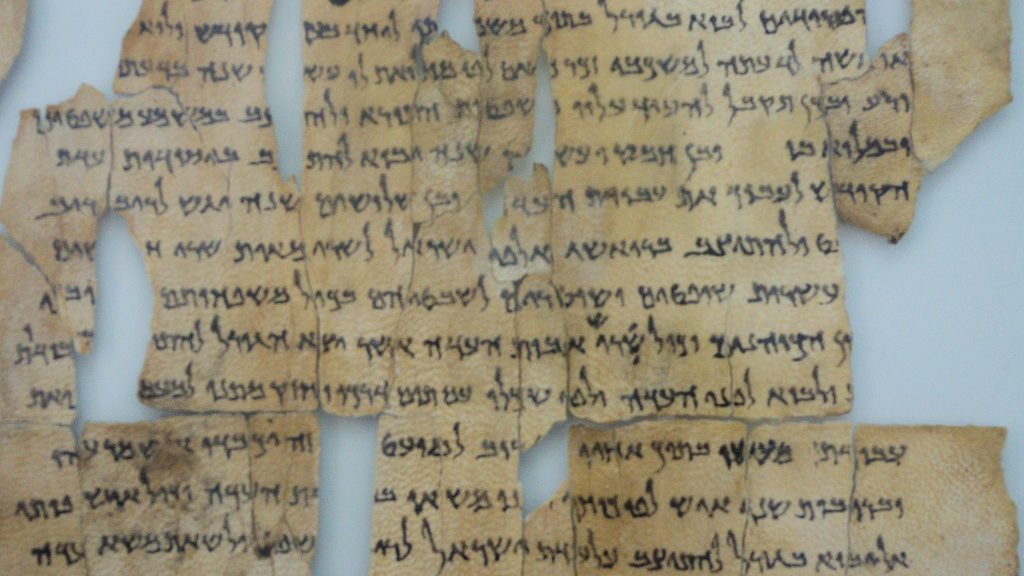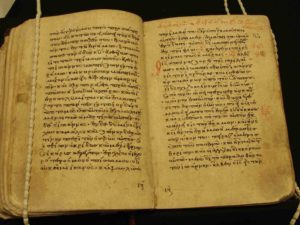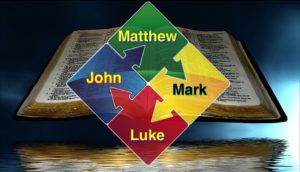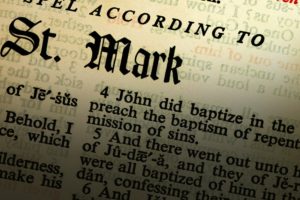Revised Augu
st 18, 2023
“Command certain people not to teach false doctrines”—1 Timothy 1:3 NIV
Since the Trinity Doctrine is said to be the main, or primary, teaching, of Christianity, why is it so disputed down to this day?
Accurate history tells us that:
(1) Various Trinities were taught and believed in many pagan religions prior to Jesus, going all the way back to ancient Babylon, 3,000 years before Christ!
(2) The Bible’s Old Testament canon closed about 400 BCE, saying nothing about any Trinity, or Trinitarian ideas..
(3) The Bible’s New Testament canon closed about 100 CE, also lacking any mention of any Trinity, or Trinitarian ideas.
(4) The Greek New Testament Master Refined Text became even more strongly fixed than ever during the latter part of the 20th century, with the publication of the Nestle-Aland (N-A) 26th Edition (now in its 28th Edition) and the United Bible Societies’ (UBS) 3rd Edition (now in its 5th Edition). These two independently done Greek Texts are now identical. They are based upon collation and critical anaylsis of the 5,800 extant New Testament manuscripts, some of which are dated to the 2nd, 3rd and 4th centuries CE.
(5) The integrity of the New Testament (NT) Text we have today is so far greater than anything else from ancient times that there is nothing anywhere close to it in textual integrity. This is what we would expect from “the word of God” (1 Thessalonians 2:13).
(6) It can truly be said of Christianity that it is a textually based religion. It is “written down,” “with paper and ink” (John 21:25; 2 John 14 NLT). The popular myth that the text of the Bible has been changed through handwritten copying and recopying through the centuries is unsupported by the facts.
(7) It was accurately predicted that “men will come forward perverting the truth” (Acts 20:30 NAB). However, the fixed Biblical text has served as a powerful safeguard against doctrinal changes.
(8) The Trinity doctrine, as we know it today, with the three in one idea, did not even appear on the scene until late in the 4th century CE, and was greatly disputed then, and it still is.
From the Bible we learn that:
(1) Jesus based his teachings upon the scriptures. “Everything must be fulfilled that is written about me in the Law of Moses, the Prophets and the Psalms” (Luke 24:44 NIV), which is the way the entire Old Testament was referred to in those days.
(2) The early Christian Church based its decisions upon the Scriptures—Acts 15:12-18
(3) The early individual Christians based their teachings entirely on the Scriptures— “He reasoned with them from the Scriptures . . . they received the message with great eagerness and examined the Scriptures every day to see if what Paul said was true” (Acts 17:2,3,11 NIV). Also see Acts 28:23.
(4) Teaching “different doctrine” (1 Timothy 1:3 ESV), or “false doctrines” (1 Timothy 1:3 NIV), was/were not allowed.
(5) Teaching “a different Jesus”, or “a different gospel” was not allowed—2 Corinthians 11:4 NLT; Galatians 1:6 NIV; NAB
(6) Going “beyond what is written in the scriptures” was not allowed—1 Corinthians 4:6 GWT
(7) “Speculations” were not allowed—1 Timothy 1:4 NIV
(8) The Church was to “test” (1 John 4:1 NIV), and “weigh carefully, what is said” ( 1 Corinthians 14:29 NIV)
(9) The fixed text of the Bible, especially the New Testament, serves as a safeguard against “all kinds of strange teachings” (Hebrews 13:9 NIV)
(10) A false doctrine might take hold for a while, but the Bible’s fixed text tends to bring the true Biblical teachings back into focus. “All people are like grass, and all their glory is like the flowers in the field; the grass withers and the flowers fall, but the word of the Lord endures forever” (1 Peter 1:24,25 NIV). This is the reason for the huge controversy over Trinitarian doctrine today. A false doctrine, such as the Trinity, is developed through a ‘distortion of the scriptures’ (2 Peter 3:15,16).
(11) “The faith that was once for all handed down to the holy ones” (Jude 3 NAB) was in written form with the completion of the New Testament by the end of the 1st century. This, and other scriptures, implies that there is nothing “add to” it (Proverbs 30:5,6 NIV). In fact God has preserved his word, like nothing else has ever been preserved. “All people are like grass, and all their glory is like the flowers of the field; the grass withers and the flowers fall, but the word of the Lord endures forever” (1 Peter 1:24,25 NIV). This fixed New Testament text serves as a safeguard against any doctrinal changes. It is true that unscriptural doctrinal changes, such as the Trinity, have been made, but “because of the truth,” “those who love the truth,” (2 John 1,2) reject them, and stick with what the Bible itself teaches.
This fixed text of the Bible, especially the New Testament, is why the Trinity is so disputed, and is, in fact, contradicted, by the Bible itself.
Not one aspect of the Trinity doctrine is found within the Biblical text itself.
Some c=&0=& translations=&1=& rendered in=&2=& (KJV),=&3=& in a way that seems to support the Trinity doctrine. This is because they were based on texts composed from manuscripts that had spurious changes.
For example, the words “testify in heaven: the =&4=&were added to 1 John 5:7,8. These words have been used to “prove” the Trinity doctrine. However, textual criticism revealed that these words are not in any Greek manuscript prior to the 14th century, so they are obviously spurious.
The KJV translation of 1 Timothy 3:16, “God was manifested in the flesh,” was based on a corrupted text, which would seem to support the Trinity doctrine. Discoveries of older, more accurate Greek manucsripts, combined with modern textual analysis revealed that the most ancient copies read: “Without any doubt, the mystery of our religion is =&5=&
John 1:1 is a favorite go-to “proof text” of Trinitarians. The usual translation in English is: “In the beginning was the Word, and the Word was with God, and the Word was God.” However, Koine’ Greek language doesn’t have the indefinite articles “a” and “an.” The Greek of John 1:1 reads, “the Word was with the God, and the Word was divine” (AAT). This is a big difference! Jesus was with THE God, that is, Almighty God, in heaven, prior to his coming to earth. The footnote to John 1:1 in the New American Bible (NAB) is quite informative: “Was God: lack of a definite article in Greek signifies predication rather identification.” Predication describes something about the subject. Jesus is godlike, but he’s not Almighty God. Once again, the Greek text, rather than Trinitarian spin, helps us to get the correct understanding. John 1:18, correctly translated, is a big help to understanding John 1:1: “No one has seen God at any time; the only begotten God who is in the bosom of the Father; He has explained Him” (NASB). Since lots of people saw Jesus, he could not be God, because, “no one has ever seen God” (1 John 4:12 NIV). Jesus is called “God”, but he is begotten, meaning he was created. He did not exist prior to his creation. His “origins are from of old, from ancient times” (Micah 5:2 NIV). Trinitarians don’t like this, so many translations render John 1:18 differently. But the Greek text trumps biased translations.
John 8:58 is usually rendered as, “before Abraham was born, I am” (NIV). Trinitarians claim this connects Jesus to being the “I am” of Exodus 3:14. However, the Greek is more accurately rendered as “I existed before Abraham was born” (AAT), or the slightly less accurate, “before Abraham was even born, I have always been alive” (NLT margin).
Acts 20:28 is often translated in a way that indicates that God died for our sins: “The church of God, which He purchased with His own blood” (NASB). However, since “No one has ever seen God” (1 John 4:12), and he is “eternal” (1 Timothy 1:17 NIV), and “the blood of his Son Jesus cleanses us from all sin” (1 John 1:7 NAB), the Greek text of Acts 20:28 is better translated as: “The church of God that he obtained with the blood of his own Son” (NRSV).
The fixed New Testament text helps with Romans 9:5: “Theirs the patriarchs, and from them, according to the flesh, is the Messiah. God who is over all be blessed forever” (NAB). This is often translated with Trinitarian bias, such as, “the Messiah, who is God over all” (NIV). The NAB footnote clarifies the Greek, by explaining, “However, Paul’s point is that ‘God who is over all’ aimed to use Israel, which had been entrusted with every =&6=&The usual translation of, “the Messiah, who is God over all,” contradicts the Trinity doctrine anyway, because, “in this Trinity . . . none is greater, or less, than another. But the whole three Persons are . . . coequal” (Athanasian Creed). If Jesus was God over all, that would include being “over” the Father and the holy Spirit.
Another Trintarian favorite is Philippians 2:5,6: “Christ Jesus, who being in the form of God, did not consider it robbery to be equal to God” (NKJV). The Greek text, however, reads: “Christ Jesus, Who, though he was in the form of God, did not =&7=&
Titus 2:13 is usually rendered as “of our great God and savior =&8=&which makes it appear that Jesus Christ is Almighty God. However, since Paul offered greetings “from God the Father and Jesus Christ our savior” (NAB), it is obvious that Paul did not mean that Jesus is Almighty God. The more accurate translation is, “of the great God and of our savior Jesus Christ” (NAB; NRSV margin).
2 Peter 1:1 is likewise rendered as though Jesus Christ is Almighty God in most translations: “Through the righteousness of our God and savior Jesus Christ”. However, the Greek is more accurately translated as: “the righteousness of our God and the savior Jesus Christ” (2 Peter 1:1 NAB margin; NRSV margin; KJV; ASV; Weymouth; Aramaic Bible in Plain English).
The=&9=& renderings=&10=& modern refined Greek Texts, such as the N-A and UBS, upon which many modern=&11=&
 “The vision which Isaiah, son of Amos, saw concerning Judah and Jerusalem in the days of Uzziah, Jotham, Ahaz and Hezekiah, kings of Judah”—Isaiah 1:1 NAB
“The vision which Isaiah, son of Amos, saw concerning Judah and Jerusalem in the days of Uzziah, Jotham, Ahaz and Hezekiah, kings of Judah”—Isaiah 1:1 NAB




